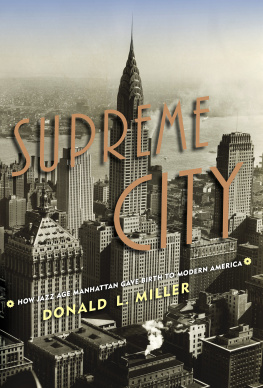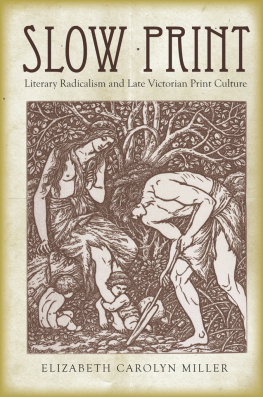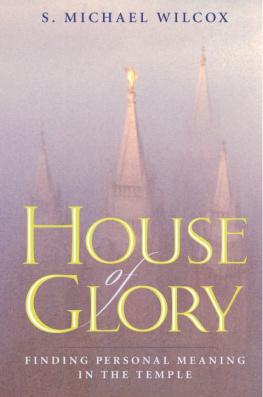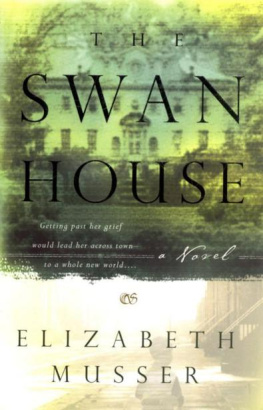LOST MANSIONS OF MISSISSIPPI

LOST MANSIONS OF Mississippi
VOLUME II
MARY CAROL MILLER

www.upress.state.ms.us
The University Press of Mississippi is a member of the Association of American University Presses.
Copyright 2010 by University Press of Mississippi
All rights reserved
Manufactured in the United States of America
First printing 2010
Library of Congress Cataloging-in-Publication Data
Miller, Mary Carol.
Lost mansions of Mississippi. Volume II / Mary Carol Miller.
p. cm.
Includes bibliographical references and index.
ISBN 978-1-60473-786-8 (cloth : alk. paper) ISBN
978-1-60473-787-5 (ebook) 1. Architecture, Domestic
Mississippi. 2. MansionsMississippi. 3. Lost architecture
Mississippi. I. Title.
NA7235.M7M553 2010
728.809762dc22 2010010308
British Library Cataloging-in-Publication Data available
This book is dedicated to
Mary Rose Carter,
my wise and patient companion
of a thousand back roads.
CONTENTS
PREFACE
In 1996, University Press of Mississippi published my first book, Lost Mansions of Mississippi. It chronicled fifty-nine of the states historically and architecturally significant antebellum homes, all vanished victims of neglect, war, fire, or weather. Three years of research and dozens of forays into courthouses, libraries, archives, and private homes yielded photos and tales of those houses, some of which were well known and revered but many of which had been completely forgotten.
The impetus for that book was a faded photograph in the files of the Mississippi Department of Archives and History. The Historic Preservation Division has cabinets jammed with information on extant and nonextant buildings. Blue, green, and manila folders represent existing buildings, and red folders indicate a structure that has been lost. Unfortunately, many drawers are awash in red, a sad litany of homes and churches and courthouses and schools that didnt survive. Warren Countys section is one of the largest, reflecting the rich architectural legacy of Vicksburg and environs. Tucked away in one thin file was a single photo of a decaying three-story brick mansion, its windows broken out, shutters missing, and two elaborate chimneytops crumbling. On the back of the photo, someone had noted, in pencil, Porterfield House, Vicksburg, Mississippi. That was it. No dates, no background, no explanation of how this exceptional example of artistry and craftsmanship had come to such a precarious plight.
Queries around the office yielded no further light on this mysterious house. I delved into the archives library and contacted sources in Vicksburg, and slowly the story of Shamrock, as Mr. Porterfield called his house, began to emerge. The photo I had found documented the last days of this elegant mansion, reduced by the 1930s to a lumber storage facility and soon to be demolished. It had survived the siege of Vicksburg, taken a direct hit from Union gunboats, evolved from a private home to a boardinghouse, and fallen on the hard times so common to the great antebellum buildings throughout Mississippi and the South.
Porterfield was just the first of these discoveries. There were literally hundreds of the dreaded red files, each an introduction to something, somewhere, that had been carefully built, served its purpose, and then disappeared. The chaos of the Civil War was a contributing factor in many losses, but not in the numbers which I had anticipated. The classic Hollywood tale of the old home place being torched as the family looked on did happen, but not very often. Much more common themes in the destruction of these houses were simply fire and finances. Remote locations, aging electrical systems, heavily oiled wood, and faulty fireplaces left a depressing number of the states finest Greek Revival, Itali-anate, and Gothic houses as nothing more than piles of brick and ashes. The most notable example is Windsor, whose monumental columns still stand in a Claiborne County clearing, iconic symbols of the Old South more than a century after fire ravaged Mississippis largest house.
Financial reverses were another bane of old homes. A family that was flush with cotton money in 1850 and poured those resources into a twenty-room showplace was often reduced to penury just a generation or two later. Half a century after they were built, these structures had evolved into white elephants: impossible to heat, exorbitantly expensive to paint, and often inconveniently located on plantation land that no longer provided jobs for anyone. Some families managed to keep the roof on and maintain a semblance of their ancestors lost lifestyle, but others simply gave up and walked away. Waverley, the Clay County home of the Young family, was left furnished and open to the elements when the last of that family left in 1913; it would be fifty years before it was occupied again. Salisbury sits deep in the woods of Wilkinson County, void of life for more than a century. Windy Hill Manor, east of Natchez, rotted out from under the elderly ladies whose father had built it, leaving ghostly doorways that opened into thin air. The WPA Guide to the Magnolia State, published in 1938, is a roll call of abandoned mansions and depressing decay.
These tragic losses were the focus of Lost Mansions of Mississippi. It was an eye-opening project for me, and I have had the opportunity of traveling all over the state to discuss this topic at libraries, conventions, schools, and historic societies. Dozens of people have shared the stories of their own family homes and houses which were in their communities, and through their thoughtfulness and generosity, I have collected an entirely new set of lost houses. The intervening years have been productive, as I have had the pleasure of collaborating with my friend and photographer, Mary Rose Carter, on several books about existing homes and historic buildings, including Written in the Bricks, Great Houses of Mississippi, and Must See Mississippi. Researching houses which still stand and having the luxury of Mary Roses talented camerawork left me reluctant to return to the daunting task of chasing ghosts, my term for the lost genre. But every time I stumbled across one of those files, deep in the closet or the archives cabinet, with just a lone photograph or a yellowed newspaper clipping, I felt an injustice was being done to these forgotten homes. When I finally compiled a list of possible inclusions, it ran to more than one hundred sites.
That list was narrowed down to twenty-seven homes, all of which are presented here. As compared to those featured in Lost Mansions of Mississippi, there are more examples of houses unfamiliar to the reader, as these are the less extensively documented structures from the antebellum and immediate postbellum period. Vintage photographs were harder to come by, and two of the homes, Kirkwood and the original Prospect Hill, left no visual images at all. Regardless, each of these houses was notable in its own right and is worthy of inclusion due to its architectural or historical impact.
It is my hope that the reader, whether an avid student of Mississippis architectural history or a casual observer, will find at least a few surprises in these pages. And that may, in turn, bring to light even more of our vanished houses. Each of these homes was important and valued in its own time and place, and all are deserving of a passing salute to the families who built them and the history found within their walls.
Next page
















